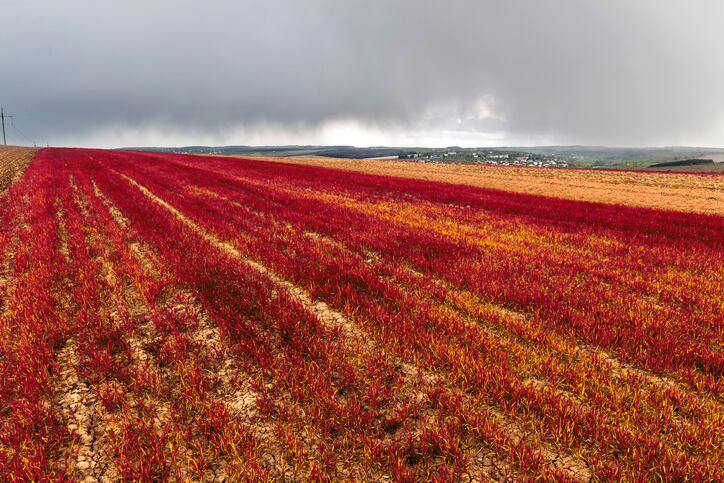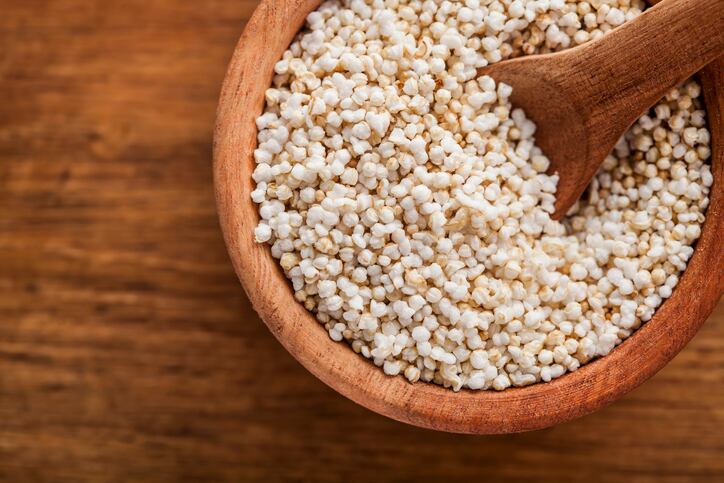Ancient Aztecs are said to have made statues of their gods with amaranth and honey, eating them in religious rituals. This practice, as well as the cultivation and consumption of amaranth, was banned by the Spanish conquistadors, triggering the grain's century-long decline.
In January this year, however, Mexico's left-wing president, Andrés Manuel López Obrador, announced the country’s ‘basic basket’ – a basket of goods distributed by the government food security agency, SEGALMEX, to food insecure families - would comply with article four of the Mexican constitution, which enshrines every individual’s right to nutritious, sufficient and quality food.
To this end, the government added healthy, native or Mexican-produced foods, such as pulses, tomato puree, tamarind, chia, and amaranth, to the basket.
'Four hundred years of oblivion end'
“When we talk about basic Mexican foods, our sacred corn and beans are usually mentioned," said SEGALMEX director Ignacio Ovalle, "but we must remember that the original Mexicans who populated our territory also used amaranth as a healthy ingredient in their diet.
“…Through presidential instructions [that] claim and strengthen the ancient tradition of our people, 400 years of oblivion end today,” he added.
The decision was welcomed as a step forward for Mexican food sovereignty and its dual fight against both obesity and malnutrition.
Nutrition, functionality and potential

Market research company Mintel has been tracking the potential of amaranth in Mexico for years and predicted in 2015 that amaranth could be “the next ancient grain to find favor among the health conscious masses”.
“Latin American governments are reacting to the obesity crisis with junk-food taxes and this makes for fertile ground for healthy snack bars and ancient grains [and] Mexico is actively resurrecting the long-forgotten Aztec staple, amaranth.”
The gluten-free seeds pack a nutritional punch with around 15% protein, high levels of the essential amino acid lysine, and more calcium, iron, fiber, and magnesium than cereals such as wheat, rye or oats. The leaves of the plant can also be eaten as a leafy vegetable, beating spinach for calcium, phosphorus, and vitamin C content.
But how easy is it to use amaranth as an ingredient, and how much potential does it have in finished products?
“[Amaranth] is easily incorporated into the Mexican diet as it can act as a partner or alternative to corn,” says Mintel.
Amaranth and similar healthy ingredients natural claims are a growing trend globally and there are opportunities for brands to expand their convenience and 'better-for-you' offerings, especially in Mexico, "an opportunity market [...] with strong value growth forecast".
Raw amaranth seed can be prepared like quinoa and eaten on its own or in a risotto or broth.
Popped amaranth cereal can be added smoothies, granola, oatmeal porridge, soups or salads.
Amaranth flour can be used to replace wheat flour by up to 20% in baked products, or can be used to make tortillas.
Amaranth leaves can be sautéed like spinach, eaten raw in a salad or added to dishes.
Many manufacturers in Mexico are already making use of the grain's versatility.
Tuhutli Amaranto makes amaranth-based granola, cereal bars, biscuits, flour, and marzipan; Germipack sells sprouted (germinated) alfalfa and amaranth seeds while Rafita makes gluten-free amaranth tortillas.
Multinational brands have also incorporated it into their portfolio for the Mexican market. PepsiCo, for instance, adds it to Quaker three-minute granola while Nestle makes amaranth and corn flakes and Yoplait adds amaranth, quinoa, and honey to individual pots of Greek yogurt.
Empowering farmers

Amaranth, which is actually a 'pseudo-grain' even though it has grain-like qualities, is hardy and resistant to drought.
"[This] means it is an excellent option to diversify crops, especially given the unpredictable global weather patterns that have recently impacted farming and livelihoods in Oaxaca," says Puente, a Mexican non-profit organization that fights malnutrition, poverty, and food insecurity by promoting amaranth cultivation in the southern state of Oaxaca.
In the right growing conditions, one plant produces between 40,000 and 60,000 seeds in one season, and farmers can earn three to five times the net profit growing amaranth over other grain commodity crops such as corn or wheat, according to Puente.

